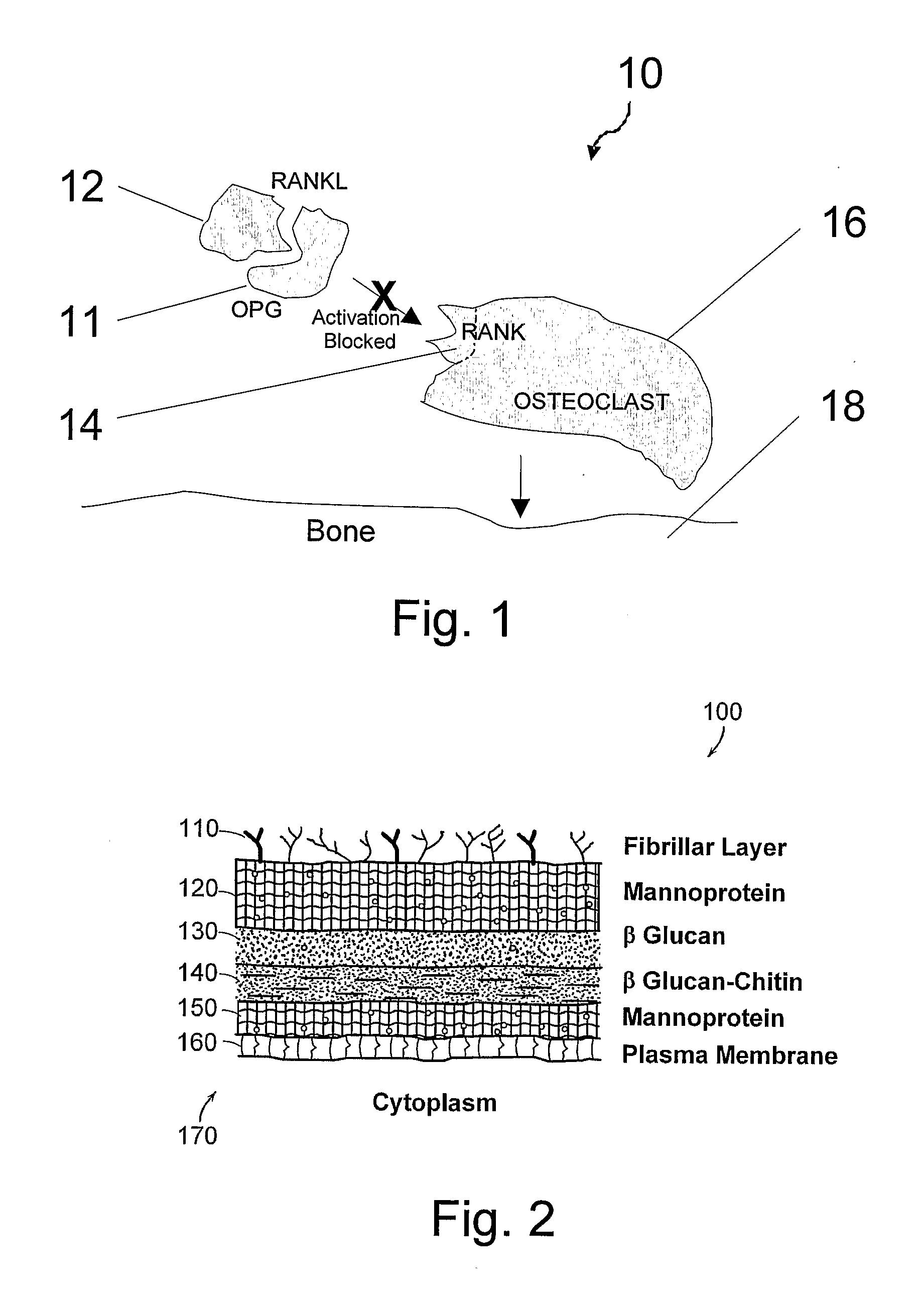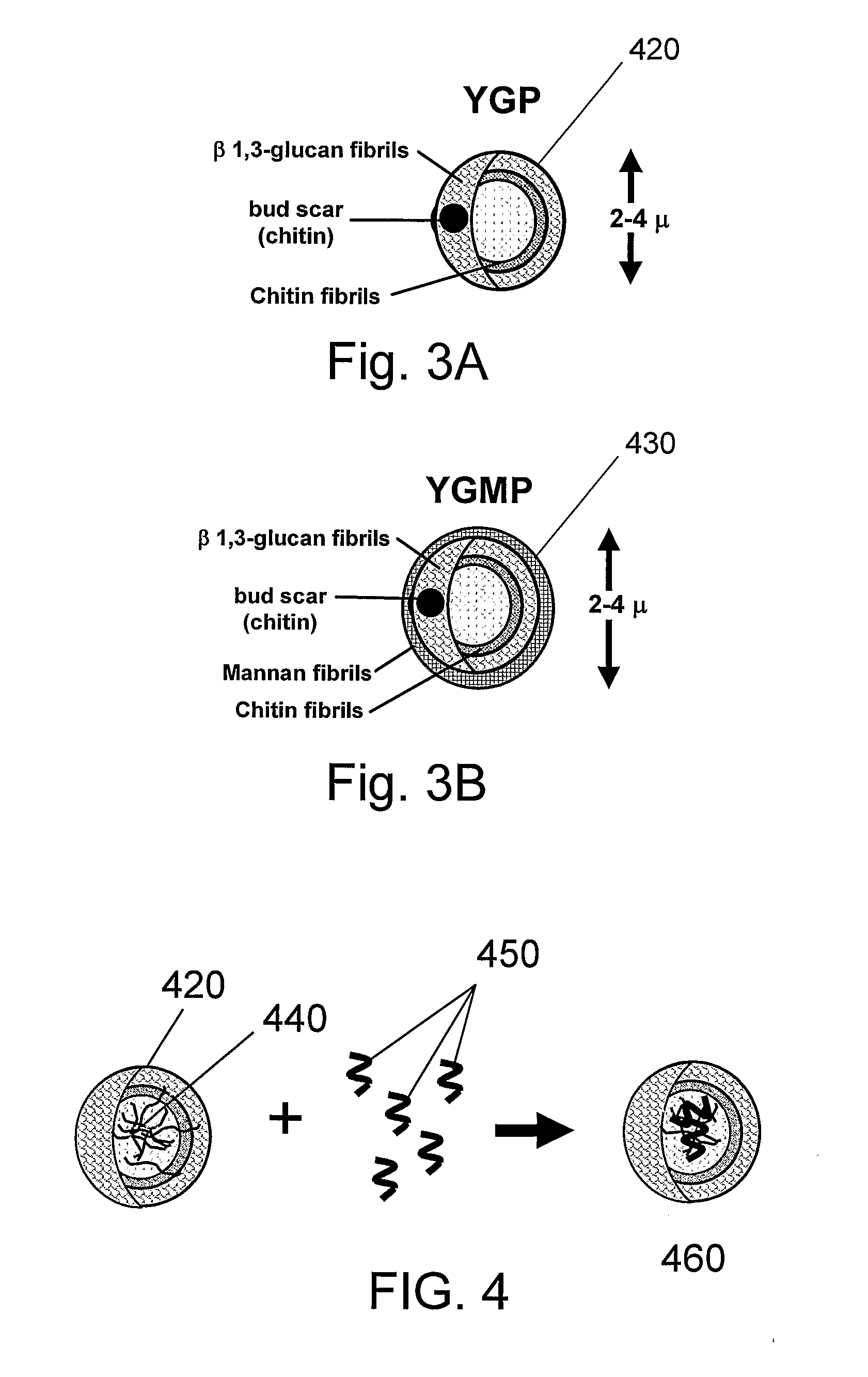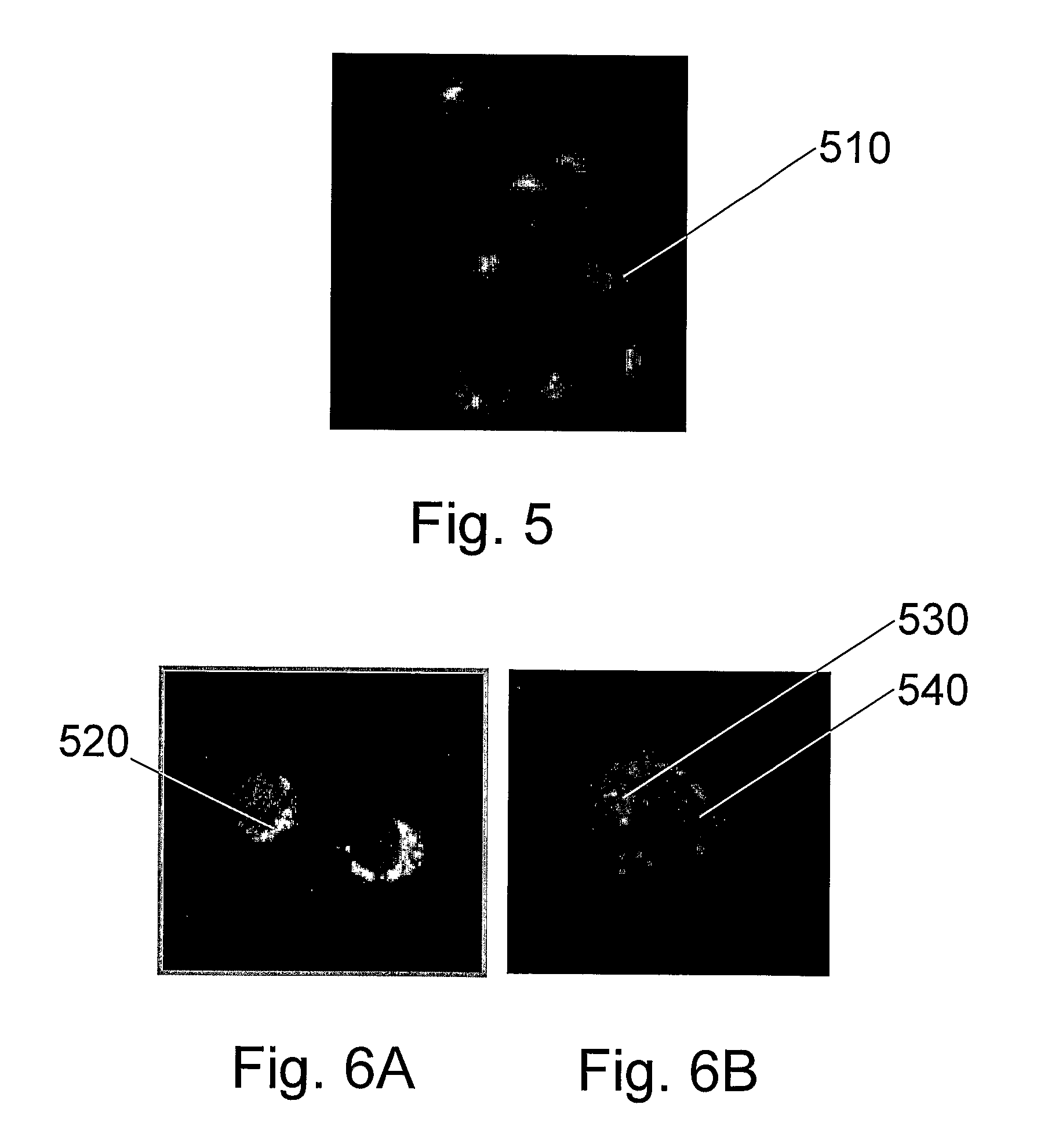Compositions and their uses for gene therapy of bone conditions
a technology of bone condition and composition, applied in the field of compositions and methods, can solve the problems of ineffective loading of serum proteins and ygp, and achieve the effect of facilitating endosomal dna release and nuclear uptak
- Summary
- Abstract
- Description
- Claims
- Application Information
AI Technical Summary
Benefits of technology
Problems solved by technology
Method used
Image
Examples
example 1
EGFP Expression By J774 Murine Macrophages Incubated With YGP:pIRES
[0188]The pIRES plasmid DNA was not fluorescently labeled in this Example, rather the functional expression of the green fluorescent protein (GFP) encoded by pIRES was used as a demonstration of uptake of loaded yeast cell wall particles, intracellular release of the pIRES DNA and expression of the GFP as evidenced by the production of fluorescence.
[0189]The YGP: pIRES compositions were prepared as follows. DNA was prepared from dilutions in deionized water of 1 mg / ml stock. The indicated amount of DNA solution was added to YGP and incubated for at least 30 minutes to allow for liquid absorption. The indicated amount of 0.2% PEI in TE or 0.2% chitosan in acetate buffer was added and the mixture was allowed to incubate for 5 minutes before sonication to produce single particles. After a further incubation of at least 30 minutes, the indicated amount of 2% CTAB was added. After an additional 5 minute incubation, the tu...
example 2
EGFP Expression by Murine RAW Cells Incubated with YCWP
[0192]Co-delivery in-vitro of YCWP-Texas Red and pgWIZ-GFP was studied using murine RAW cells: Murine RAW 264.7 cells (ATCC, Manasas, Va., No. TIB-71™) were plated in 6 well plates as described above for J774 macrophages. YCWP-tRNA / PEI / CTAB particles (1×107) containing positively charged yeast tRNA / PEI / CTAB polyplexes were loaded with 0.5 mg pgWizGFP DNA (Gene Therapy Systems, San Diego, Calif.) by absorbing the anionic plasmid DNA onto the surface of the cationic tRNA / PEI / CTAB nanopolyplexes within the YCWP. Then, the YCWP-tRNA / PEI / CTAB / gWizGFP compositions were coated with PEI (5 mg). This YCWP-DNA composition at a particle:cell ratio of 5 was mixed together with empty YCWP-TR (YCWP chemically labeled with Texas Red, Molecular Probes) at a particle:cell ratio of 5, and then incubated with the murine Raw cells to demonstrate YCWP uptake (red particles) and GFP expression (green diffuse fluorescence) within the same cell. As can...
example 3
In Vivo Oral Bioavailability of YGP and YGMP Particles in Mice
[0193]The effect of cell surface carbohydrate composition on oral bioavailability of yeast glucan particles was studied using fluorescently labeled yeast cell wall particles. Fluorescently labeled yeast glucan particles (YGP-F) and fluorescently labeled yeast glucan-mannan particles (YGMP-F) were prepared by reacting YGP and YGMP with dichlorotriazinyl aminofluorescein (DTAF), 20 mg / ml in DMSO, freshly prepared, in 0.1M borate buffer, pH 8 for 2 days at 37 degrees Celsius. Excess DTAF was quenched with 1 M Tris buffer, pH 8.3 and washed free of unreacted products by repeated washing with sterile PBS.
[0194]Aiquots (0.1 ml) of YGP-F (1 mg / ml) and YGMP-F (2.5 mg / ml) were administered to mice (C57B1 / 6 wild-type) by oral gavage and subcutaneous injection for 5 days. Feces pellets were collected on day 5 from each group. The mice were euthanized on day 7, and tissues (brain, liver, spleen, bone marrow and small intestine) were ...
PUM
| Property | Measurement | Unit |
|---|---|---|
| weight percent | aaaaa | aaaaa |
| diameter | aaaaa | aaaaa |
| molecular weight | aaaaa | aaaaa |
Abstract
Description
Claims
Application Information
 Login to View More
Login to View More - R&D
- Intellectual Property
- Life Sciences
- Materials
- Tech Scout
- Unparalleled Data Quality
- Higher Quality Content
- 60% Fewer Hallucinations
Browse by: Latest US Patents, China's latest patents, Technical Efficacy Thesaurus, Application Domain, Technology Topic, Popular Technical Reports.
© 2025 PatSnap. All rights reserved.Legal|Privacy policy|Modern Slavery Act Transparency Statement|Sitemap|About US| Contact US: help@patsnap.com



